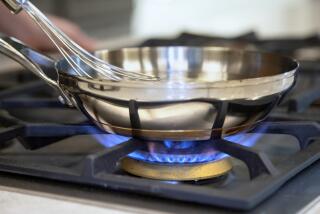Preventing Carbon Monoxide Poisoning
It was after midnight when the Midwestern couple came home and pulled their car into the garage beneath their townhouse. “It was the holidays and we know they brought some packages inside before they went to bed,” recalled Tom Greiner, a University of Iowa Extension Service professor and expert on carbon monoxide poisoning. “We’re sure it was an accident, but for some reason they left the car running. The next morning, they were dead. So were the neighbors in the condo next door.”
The couple was discovered after emergency crews were summoned by graduate students living in an adjoining condominium; they were so sick from inhaling the odorless, colorless gas seeping into their unit from the garage vents they had to crawl to a phone to get help.
“The sad thing is that this could have been prevented with a carbon monoxide detector,” said Greiner, part of the team that investigated the deaths a few years ago. “But nobody living in the townhouses had one.”
Each year, an estimated 5,000 people in this country die from accidental carbon monoxide poisoning, Greiner said. An additional 20,000 are injured by the gas, which is created when fossil fuels are burned. The gas, which causes the body to suffocate from the inside out, is the leading cause of accidental poisoning deaths in America, according to the Centers for Disease Control.
“It’s nasty stuff and you don’t want it in your house under any circumstances,” said Frank Docimo, a hazardous materials expert and firefighter in Connecticut.
Docimo said his volunteer district in the Turn of River community responds to at least two carbon monoxide detector emergency calls a week. “And that’s not false alarms,” Docimo said. “These are real calls.”
He has also seen the effects of the poisoning firsthand. During a severe winter storm several years ago, Docimo said several of his firehouse colleagues passed out when a vent on their heating system broke and the poisonous gas filled the building. A police officer, who stopped by the firehouse to use the restroom, discovered the unconscious firefighters.
“At least with a fire,” Docimo said, “you can see or smell something and call for help. Carbon monoxide is much trickier because it’s invisible to the senses.”
Although it’s as natural as the air we breathe, carbon monoxide can suffocate us by robbing our vital organs of oxygen, said Dr. Craig Conoscenti, chief of hyperbaric medicine at Norwalk Hospital in Norwalk, Conn. “If it doesn’t kill you, it can do serious damage to your organs, including the kidneys, the heart and brain,” he said.
The hospital’s hyperbaric chamber treats victims of the poison by exposing them to large amounts of oxygen to flush their vital organs.
Even low levels of carbon monoxide exposure can produce deceptive symptoms that mimic the flu, Conoscenti said. “You could feel like you were hit with a bad flu, but you wouldn’t have a temperature.”
Now that the temperatures are dropping and families are preparing for the holidays, the threat peaks, said Bob Wheatley, a Chicago-based safety education expert for First Alert, a leading manufacturer of carbon monoxide detectors. “Between Thanksgiving and New Year’s, the calls go up.”
The reason, he said, is that appliances we take for granted--furnaces, hot-water heaters, gas-fired clothes dryers, ovens, grills and space heaters--can produce carbon monoxide when turned on. The same is true for improperly vented fireplaces.
Even something like an oven filled with holiday turkey and pies can make you sick. “There’s a good reason why Grandma cracks the kitchen window when she bakes,” Greiner said. “A lot of stoves don’t vent to the outdoors and you can have the buildup as you bake.”
Docimo notes the problem has gotten worse as our building techniques have improved. “We seal up our houses really tight to save on our fuel bills,” he said. “But we have probably sealed them up too tight. The gas has nowhere to go.”
The threat is real enough that every household should have a carbon monoxide detector, Conoscenti said. He recommends buying one that can be plugged into an electrical outlet and has a backup battery.
The carbon monoxide detector industry estimates that only about 27% of U.S. households have detectors, compared with 93% of homes with smoke detectors.
Conoscenti recommends installing a detector on every floor of your house. “You shouldn’t just have them in the basement near the furnace,” he said. “You need them central to your sleeping spaces. If you can only afford one, that’s where I would put it.” Detectors cost about $25 and are available at hardware and home improvements stores.
More to Read
Sign up for Essential California
The most important California stories and recommendations in your inbox every morning.
You may occasionally receive promotional content from the Los Angeles Times.










